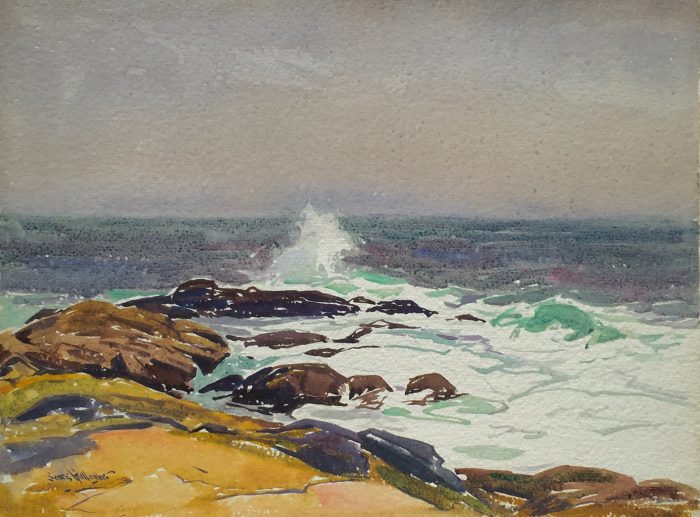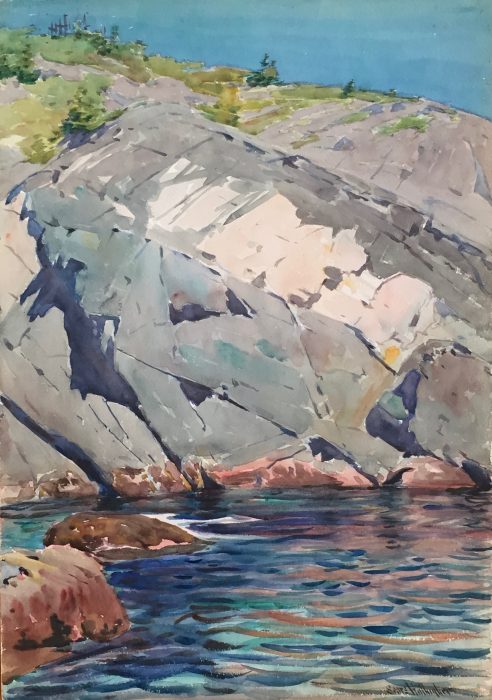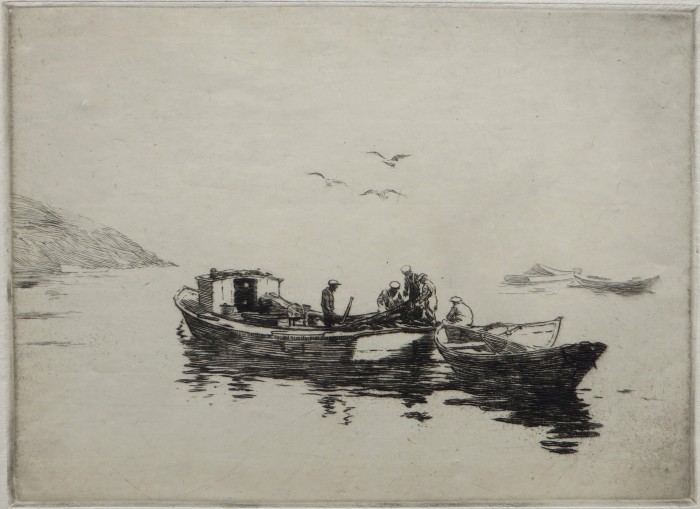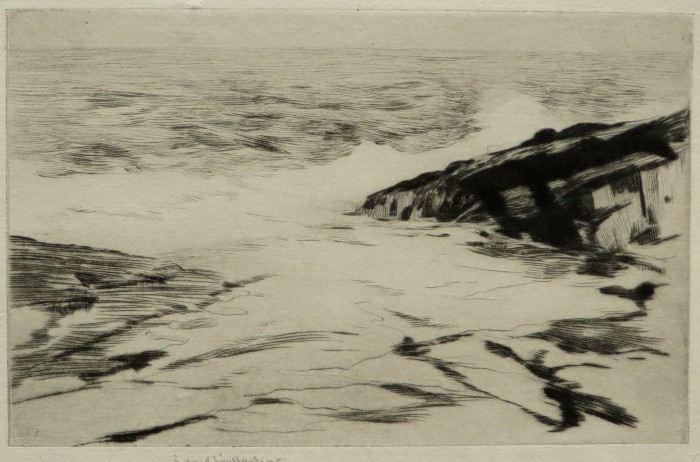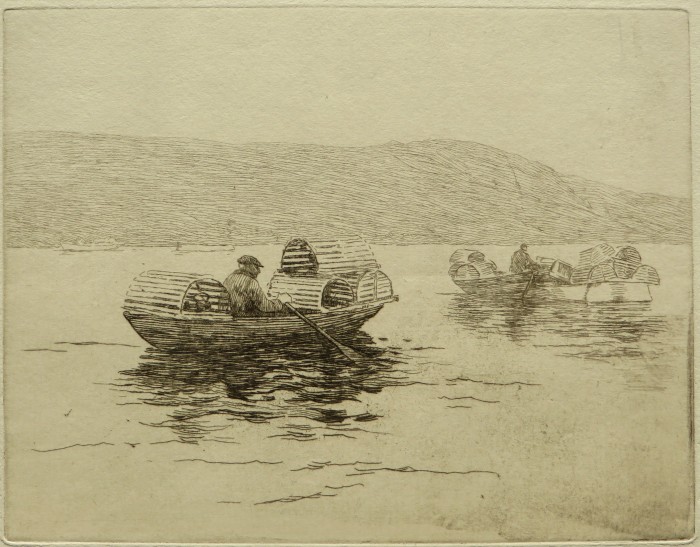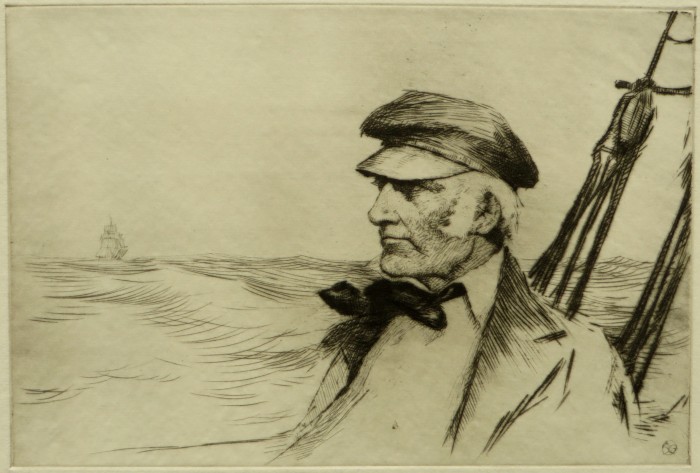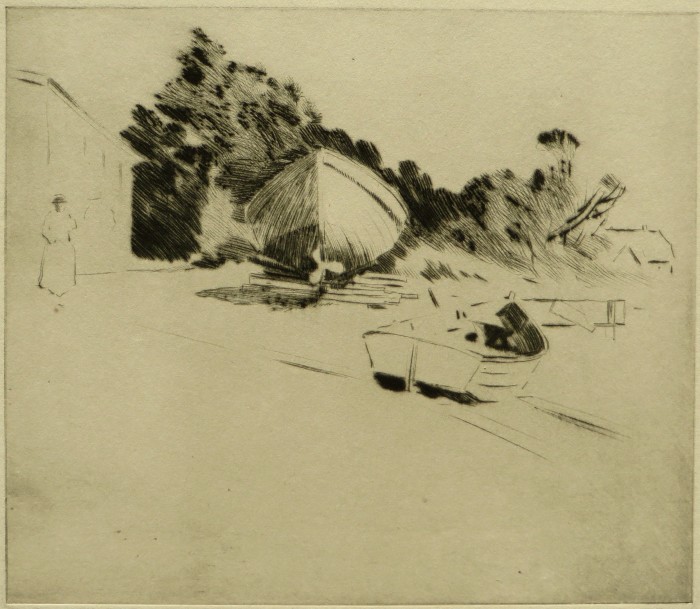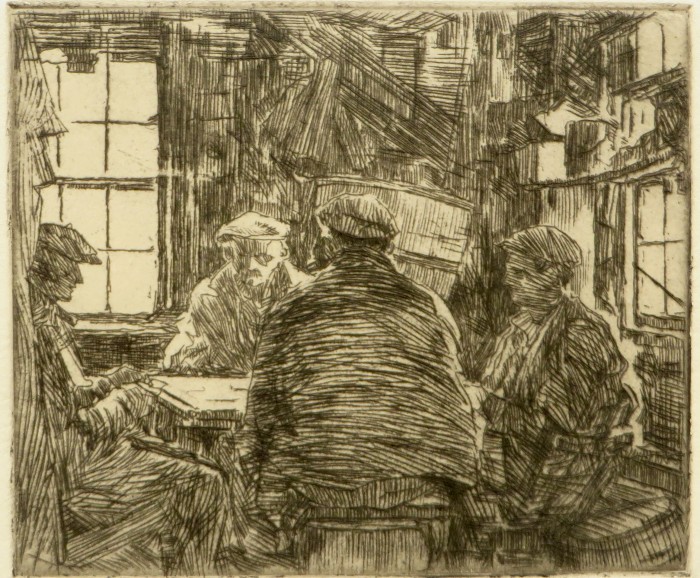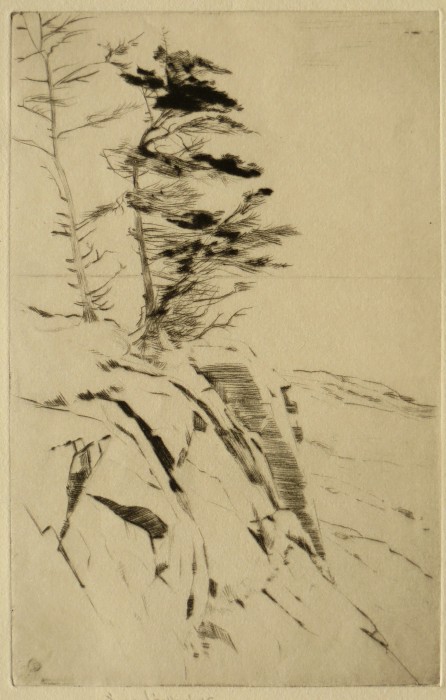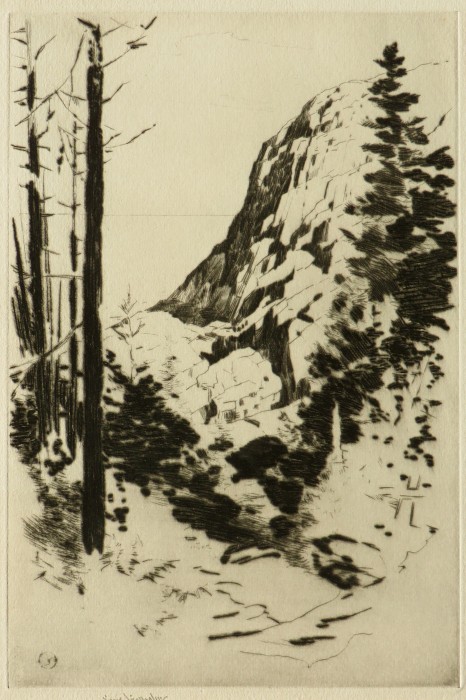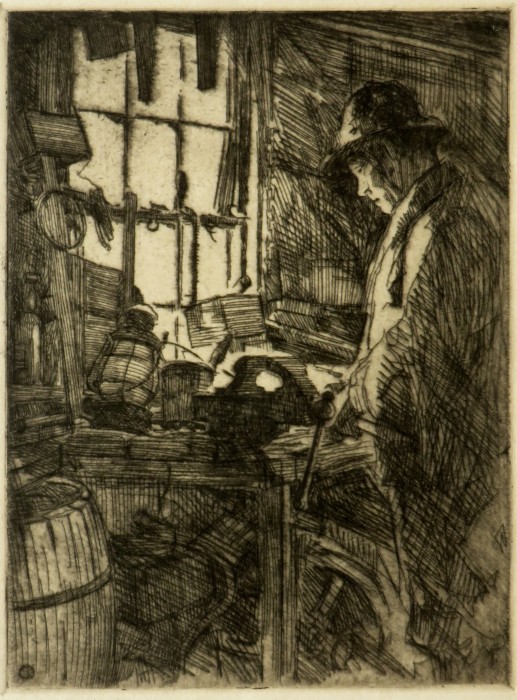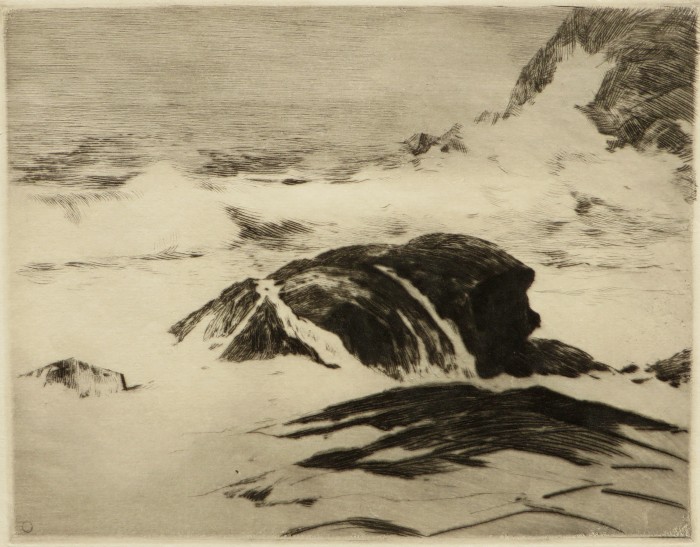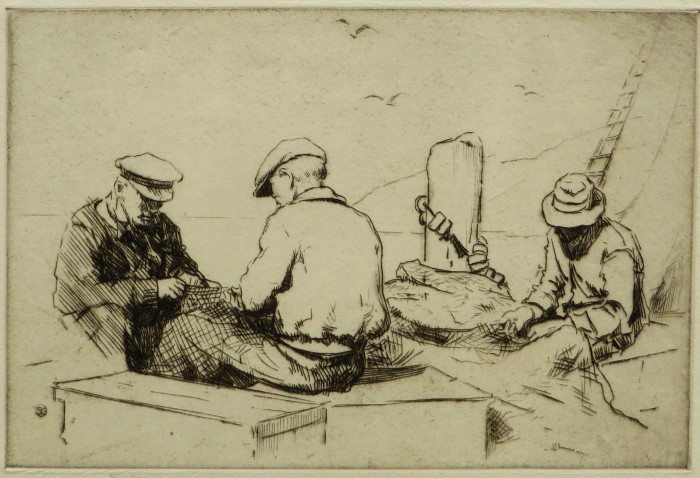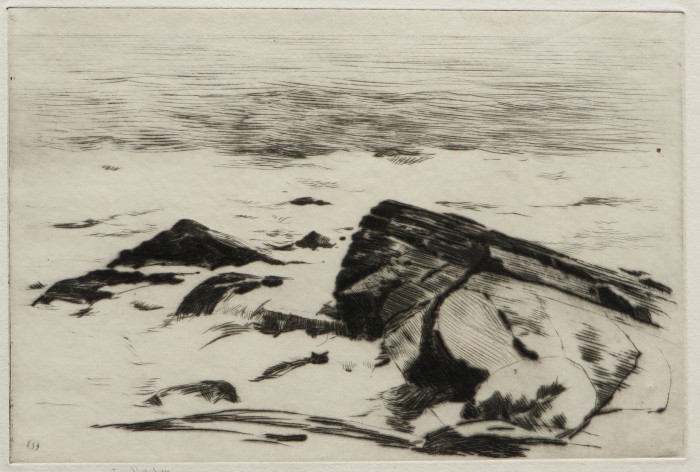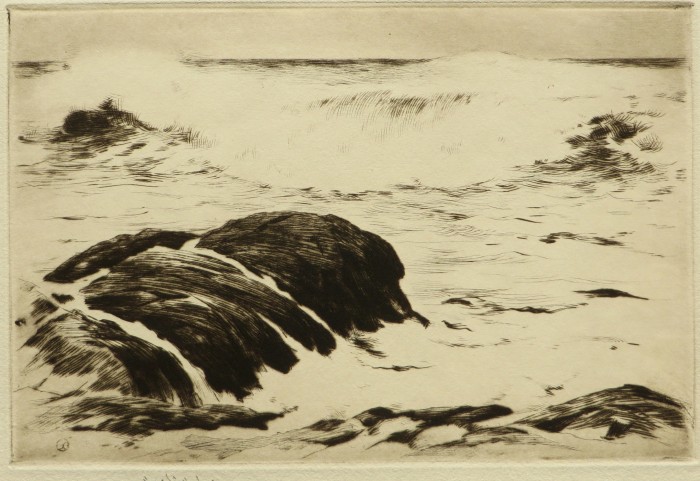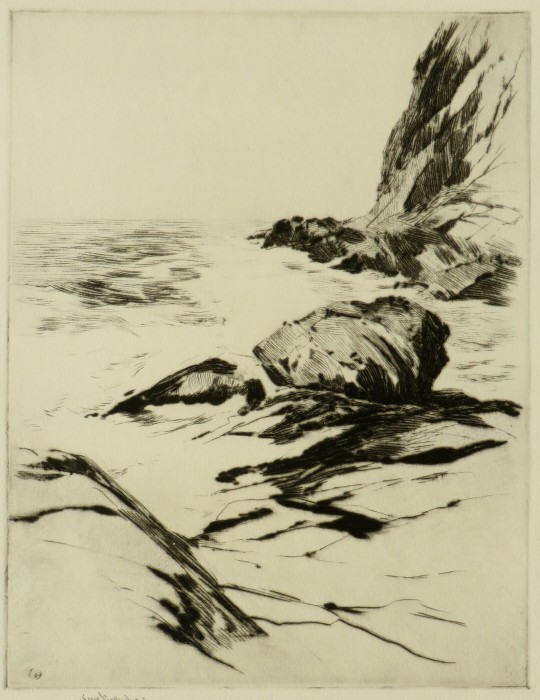Sears Gallagher
This exceptional collection of Sears Gallagher etchings and watercolors made during the period between 1893 and 1930, portrays in its early days the fishing village, boats, forest and rocky coast of Monhegan. The sale of these works benefits the Monhegan Museum of Art and History.
“Over the course of a career that lasted from the early 1890s until World War II, Sears Gallagher was one of Boston’s most respected artists and a key figure in the development of both watercolor painting and printmaking in the United States. Although his work encompassed a wide range of subjects, he was best known for his New England scenes, which are once again gaining in reputation for their sensitivity, technical perfection and impeccable craftsmanship. At the height of his career, Gallagher’s watercolors were favorably compared to those of Winslow Homer and Frank Benson, and his etchings and drypoint to those of James Whistler and Joseph Pennell.
In 1892, Gallagher painted his first watercolors of Maine’s Monhegan Island, which he visited that summer with his friend and mentor Samuel Peter Rolt Triscott, a brilliant English-born watercolorist who had already provided instruction in that medium to many other New England artists, including Winslow Homer. Gallagher and Triscott deservedly claim the status of pioneers of the Monhegan art colony. For the next forty years, Gallagher would pay a summer visit to Monhegan almost annually.
His work would gain in freedom and confidence over the course of his career, but it would always be remarked, by critics, that -regardless of date or medium- a “Gallagher” would possess the qualities of “exquisite draughtsmanship,” “tact,” “subtlety,” “unaffected charm,” “balance” and an unerring “sureness of touch.””
*excerpted from a biography by Bruce W. Chambers, Ph.D., 2006
Address
48 Main Street
Monhegan Island, ME 04852
Open-Close
Gallery Open
Mid-May to Mid-October
11:00am to 4:30pm
Seven Days A Week

